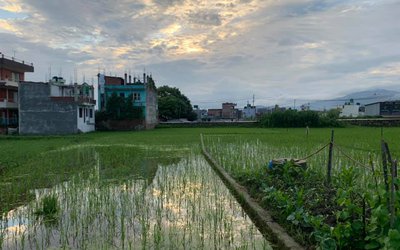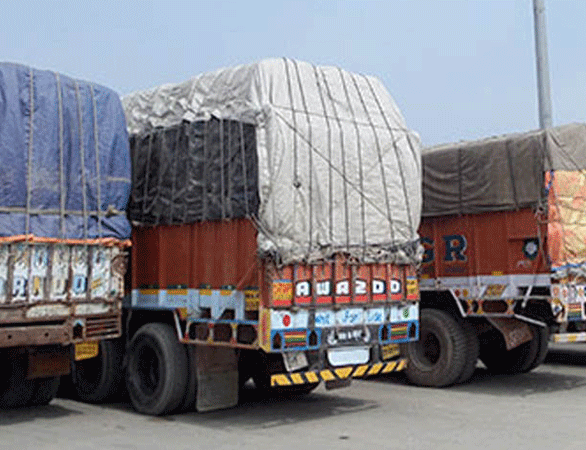
As Nepal is facing a severe economic crisis and declining the balance of payment, leaders of four ruling coalition partners led by Prime Minister Sher Bahadur Deuba visited Nijgadh expressing their commitments to build Asia’s biggest international Airport clearing the pristine rain forest and destroying the endangered Asiatic Elephant.
Four leaders prime Minister Deuba, Maoist leader Pushpa Kamal Dahal Prachanda, UML-US leader Madhav Kumar Nepal and Madheshi leader Upendra Yadav visited the site defying the order of the Supreme Court, which issued mandamus not to construct an international airport in the surrounding areas. Backed by main opposition party leader K.P. Sharma Oli, constructing the 4.5 billion dollars international airport is a consensus project of all political parties.
With over 6 billion dollars in foreign currency reserve, nobody needs to take doubt the economy of Nepal given the consensus for the construction of mega project like the international airport at the cost of the pristine forest of the world.
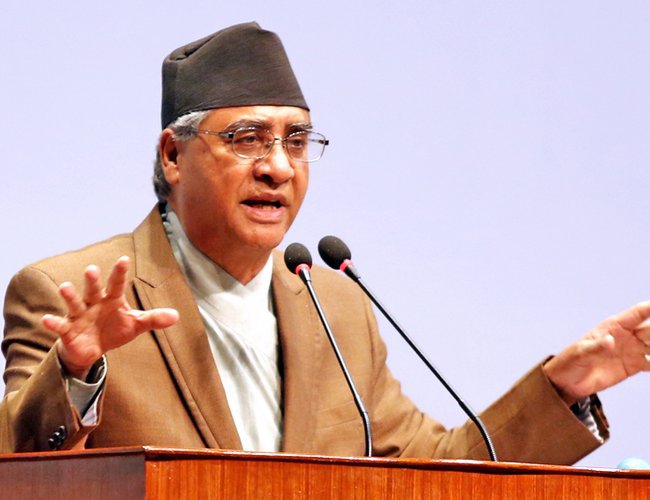
After hearing over three years, the full bench presided by five justices of the Supreme Court issued the order to stop the activities. Senior justices Hari Krishna Karki, Bishwombher Shrestha, Ishwori Prasad Khatiwada, Prakash Man Singh Raut and Dr. Manoj Kumar Sharma delivered the verdict analyzing entire issues regarding the international airport.
Having recently completed two international airports in Bhairawa and Pokhara spending over 100 billion rupees, Nepal's scarce resources are always under strain. Similarly, over 50 billion rupees spend in the last three years just to construct the view towers in rural municipalities. Over 150 billion rupees Kathmandu-Terai fast track is currently under construction. However, the project received Rs.20 billion against its demand of Rs.40 billion. Under a state restructuring program, Rs.60 billion has already been spent to purchase vehicles to provinces and rural and municipalities.
Private sectors also waste resources investing in unproductive sectors like real states and land. As there is a wave of wasting scarce resources, one cannot rule out the possibility of economic collapse.
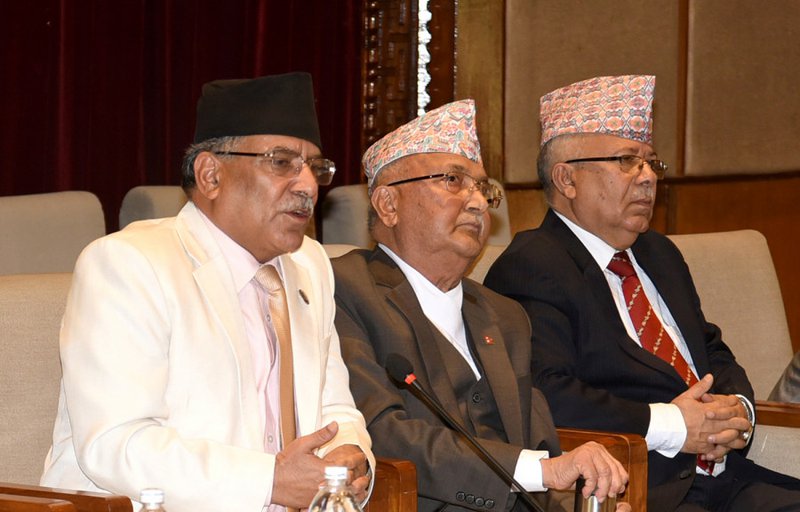
Going through this kind of misuse of resources for the so-called mega projects, one cannot rule out the possibility of Nepal’s economic crisis and head to the road of Sri Lanoka.
“If we don’t work sincerely learning from Sri Lanka, Nepal is inevitable to reach the economic and political crisis like that faced by Sri Lanka. Observing the present scenario, Nepal is following the path of Sri Lanka,” tweets former deputy prime minister and senior leader of Maoist Center Narayan Kazi Shrestha.
Aspiring to construct mega projects, improper and inappropriate use of resources, growing import of foodstuffs, petroleum products and declining tourism flow and internal production, Shrestha’s concern has valid point.
Governor of Nepal Rasta Bank Maha Prasad Adhikari also said that Nepal needs to take drastic steps urging the business community to prepare to pay higher interest rates. “Only through joint efforts of all of us, we can save our economy,” said Governor Adhikari replying to queries at the Finance Committee of the House of Representatives.
Warnings are coming from senior leaders of the ruling party, governor economists and civil society leaders.
Is Nepal going the way of Sri Lanka?
Nepal may not be in quite such dire straits as Sri Lanka for now. Nepal has much less debt, equal to almost 50 percent of GDP. By comparison, Sri Lanka’s debt-to-GDP ratio was 104 percent in 2021.
And tourists are starting to return to the Himalayas, bringing much-needed foreign cash to Nepal. In March, Nepal reported 42,000 visitors for the month, the highest monthly total in over two years.
Nepal has a surplus of hydroelectricity, bio-mass contributes over 72 percent of energy consumption and over 80 percent population in rural Nepal lives in subsistence farming. Unlike like the rural subsistence-dominated economy of Nepal, Sri Lanka’s economy is urban.
Remittance inflow has been recorded to be Rs 904 in the first 11 months of the current fiscal year 2021-22.

As published by the Nepal Rastra Bank on Monday, remittance inflow has increased by 3.8 percent according to the macroeconomic data for the first 11 months of the current fiscal year.
According to the central bank, remittances had increased by 12.6 percent in the same period last year. Remittance inflow on the US Dollar has reached Rs 7.51 billion with a rise of 1.5 percent. Last year the inflow had upped by 10.5 percent.
Alarmed by the developments in Sri Lanka and the worsening economic scenario in Nepal, the government and Central Bank have already taken some preventive measures.
On April 26, the government formally banned the import of 10 luxury or non-essential goods till mid-July 2022 and the government has already announced to extend it till remarkable progress in the economy.
At a time when economists and officials are warning about the possibility of Nepal is towards to an economic crisis like that of Sri Lanka showing Nepal’s economic indicators including the balance of payment is deteriorating further, Minister of Information, Communication Technology Gyanendra Bahadur Karki dismissed all speculation.
Although some sections are intentionally disseminating the false rumor saying that Nepal is heading to Sri Lankan way. This is completely false. Our economy is in good shape and the government has been taking all steps to strengthen the economy of the country. The government is taking all precautionary measures to protect the economy and there needs support from all.”
Nepal’s economy
During the first eight months of the current fiscal year 2021-22, imports increased by 38.6 percent to $10.7 billion. However, exports totaled $1.2 billion, resulting in a total trade deficit of $9.5 billion, accounting for almost 28 percent of Nepal’s GDP in 2021. The current account deficit also increased from $1.29 billion to $3.88 billion. Nepal finances the current account deficit primarily by trade credit, external concessional loans, and reserve drawdowns.
Equally concerning for Nepal is the reduction in the flow of foreign remittances. Remittances account for more than a quarter of Nepal’s GDP. During the early stages of the pandemic, remittances increased despite expectations to the contrary. However, in the first eight months of the current fiscal year, remittances declined by 1.7 percent to $5.2 billion.
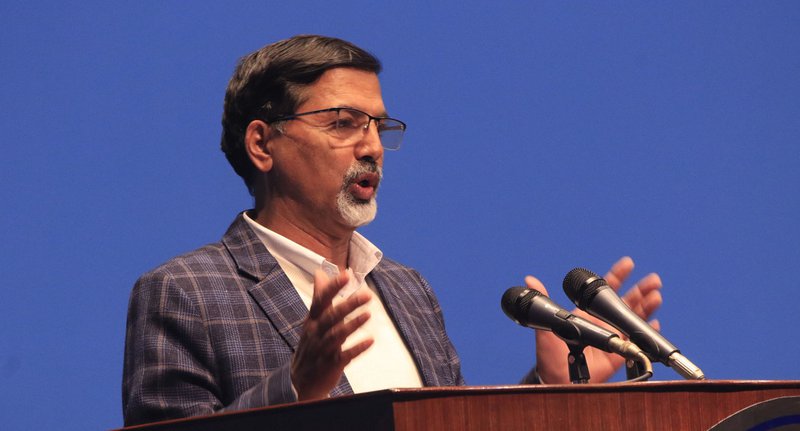
Given the lust for political leadership in mega projects, economists are comparing Nepal's situation with that of Sri Lanka and giving a pessimistic view of Nepal's economy.
With the Russia-Ukraine war raging on, the World Bank has revised Nepal’s growth projection too. Nepal’s economy, led by the recovery of the services sector amid high Covid vaccination rates, is expected to grow by 3.7 percent in the current fiscal year and 4.1 percent in the next year.
This may shave Nepal’s economic growth by an estimated 0.2 and 0.6 percentage points in the current fiscal year 2021-22 and the next fiscal year 2022-23 from previous projections according to the World Bank.
Inflation And Rising Food Prices
Rising food prices driven by the cost of transportation, a growing trade deficit, burgeoning debt, and decreasing domestic revenue are some of the worrisome indicators. These are not good signs for any country recovering from the Covid-19 pandemic.
Now Nepal is facing a credit crunch situation due to the liquidity crisis. The CD ratio of almost all banks has crossed over 90 percent, and they are unable to lend money to clients.
Deposit interest rates have surged heavily during this period, yet the deposits are not significant enough. The government is unable to utilize its budget as proposed, and cash flow into Nepal's economy is seriously affected.
Nepal’s consumer price inflation accelerated from 5.6 percent in 2020 to 7.8 percent in 2022, which was above the Nepal Rastra Bank’s upper tolerance of 5 percent. The inflation eased to 6 percent as of April this year.
Inflation hurts the fixed-income groups, workers in informal sectors, small businesses, and the poor the most. An economist said that combined with higher unemployment, rising inflation will push more people below the poverty line, household debt will also rise, and spending cuts will follow.
Food prices contributed about 60 percent to the overall inflation and non-food contributed to 20 percent in 2021.
The finance ministry in the budget report stated that the rising cost of fuel will have a ripple effect that can cause a significant trade shock. Similarly, the rising cost of goods is likely to affect manufacturing competitiveness and impact investment prospects.
Fiscal deficit
Nepal’s fiscal deficit has been widening over the years. The fiscal deficit is growing for last few years and it will likely reach around 7 percent of GDP in this fiscal year.
With dwindling domestic revenue, the deficit is projected to further widen at an all-time high which is above 10 percent of GDP in the fiscal year 2022-23 of the total expenditure estimated
According to the finance ministry, the deficit would be financed through net external concessional borrowing of and net domestic borrowing (treasury bills and long-term government bonds).
The deficit was observed because of the shortfalls in the domestic revenue collection and increased spending requirements related to the pandemic. According to the budget report, the ministry targets to contain the fiscal deficit below 5 percent of the GDP during the fiscal year 2022-23.
Trade deficit
Department of Customs report of the first 11 months showed that the amount of the imports soared by 27.5 percent to Rs 1,763.2 billion in comparison to the same period of the previous FY which is the major cause of outflow of the liquidity.
Rising prices of goods and increasing imports are already widening the country’s current account deficit (CAD). The CAD was projected to widen from 12.4 percent of GDP in the fiscal year 2020-21 to 23.6 percent of GDP in this fiscal year.
Moreover, the trade deficit which is the largest component of CAD was estimated to widen from 7.1 percent in the fiscal year 2020-21 to 17.8 percent of GDP in the fiscal year 2021-22. This was attributed to a decline in energy generation and lower exports and a significant increase in imports.
As an import-dependent economy with a pegged exchange rate, any depreciation of the Indian rupee versus the US dollar raises the cost of imports from third countries. However, the pegged exchange arrangement is in favor of Nepal as more than 80 percent of its trade is with India.
Foreign currency reserves
As a result, Nepal’s gross foreign exchange reserves decreased to $9.58 billion from $11.75 billion. As a result, its foreign exchange reserves are sufficient to cover prospective merchandise and services imports for just 6-7 months.
Widening current account deficits eats into the foreign currency reserves. The gross international reserve is estimated to deplete.
Its repercussion was reflected when the NRB report showed that the foreign exchange reserve declined by Rs. 252.1 billion in the period between mid-July 2021 and mid-May 2022 indicating that this much amount returned to the central bank from the economy in lieu of foreign currency outflowed from the country.
Liquidity Crisis
The current fiscal year (FY) is coming to an end witnessing the depletion of liquidity in the bank and financial institutions (BFIs) for the whole of the FY.
The Nepal Rastra Bank (NRB) accounted for excess liquidity on an average of Rs 10 billion in the last 10 days in the end of mid-June 2022, which remains far below compared to Rs 125 billion recorded in mid-July 2021.
Consequently, the shortage of liquidity has triggered a spike in interest rates. The macroeconomic and financial situation published by NRB showed that weighted average interest on loans shot up from 8.53 percent in mid-May 2021 to 11.42 percent at the end of mid-May 2022.
The low excess liquidity on the account of the NRB signals that the BFIs have been operating under the shortage of liquidity since the beginning of the running FY. The shortage has spurred the short-term interest rates as well as the long-term.
Nepal-India Pegged Currency Exchange
Unlike other Sri Lanka, Nepalese currency pegged to Indian currency for a greater financial stability, Nepal has been following a pegged exchange rate system with the Indian rupee with periodic exchange rate corrections through revaluation or devaluation.
Nepalese currency pegged to India currency is in a greater advantage in the time of the major crisis like the current one. Nepal Rastra Bank pegged the Nepali rupee to the Indian rupee and fixed the exchange rate at 160 Nepali rupees for Indian 100 rupees. Such a provision entailed that the Nepal Rastra Bank could buy and sell any amount of Indian rupees at the given exchange rate.
The last adjustment that was made between the two currencies was on February 1, 1993, when the earlier exchange rate of Nepali rupees 160 equivalent to Indian rupees 100 was revived. Thus, for quite a long time the exchange rate between the Nepali and Indian rupees has been largely the same, despite the fact that the Foreign Exchange Regulation Act 1962 allowed the convertibility of Nepali rupees with all other currencies.
The pegging of the Nepali rupee with the Indian rupee is in Nepal's greater national interest. There is overwhelmingly consensus within Nepal on pegging issue.
The economic instability in Nepal is being kept within manageable limits since the Nepali rupee is pegged to the Indian rupee. Former governor of Nepal Rasta Bank. Yuva Raj Khatiwada said that the Nepali currency is strengthening only because it is pegged to the Indian currency.
At a time when Nepal’s political leaders are luring to mega projects, they would have destroyed Nepal’s currency market for the sake of individual interest.
Nepal’s Proximity To India
Every country has its own distinguished economic, political, and social fundamentals. Different states have different nature which is also determined by its position and geography.
Having closer geographical, cultural and civilization ties and an open border with India, Nepal is situated siding with it. It is a big safeguard of Nepal and it is also sometime a matter of frictions. Nepal’s destiny is guided by its south-facing nature. In the words of late NC leader Krishna Prasad Bhattarai “Bharat Mukhi” which many Nepalese nationalists do oppose? However, it is a reality. One may have like and dislike but no one can change the destiny.
Nepal has been an integral part of Indian religion, culture, and society. Nepalese people form a big chunk of Indian Army too. The location and interconnected threads of Nepal and India makes it the most important neighbor for India.
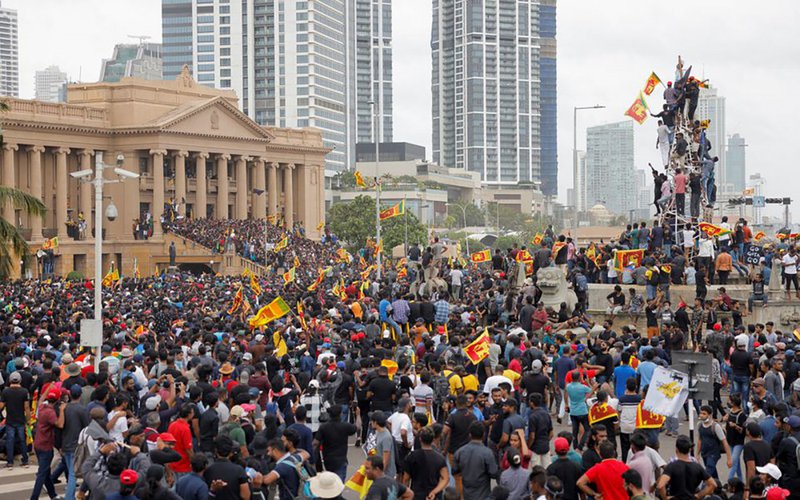
Experts argue that India will never like Nepal's economy to fall so that external forces may take advantage of it. That’s why in addition to a 750 million USD line of credit started in 2016, India is already executing another 1.65 billion USD projects in Nepal under the line of credit. Another one-billion-dollar worth projects are in pipeline too.
Nepal vis-à-vis Sri Lanka
Fortunately, Nepal may not be in quite such dire straits as Sri Lanka. The former country has much less debt, equal to almost 50 percent of GDP. By comparison, Sri Lanka’s debt-to-GDP ratio was 104 percent in 2021.
And tourists are starting to return to the Himalayas, bringing much needed foreign cash to Nepal. In March, Nepal reported 42,000 visitors for the month, the highest monthly total in over two years.
Currently, the Sri Lankan financial crisis is causing political turmoil and unrest. It is "debt trapped" and is deemed incapable of repaying its international debt obligation.
In this context, some economists of Nepal are comparing Nepal's situation with that of Sri Lanka and giving a pessimistic view of Nepal's economy. However, Nepal's financial indicators as such suggest that it won't face a situation as severe as Sri Lanka's.
The government and Nepal Rastra Bank have already taken proactive financial measures to stabilize its foreign currency reserve. Nepal's present currency reserve is capable of covering imports of about six-and-half months, a slightly alarming foreign currency position but not worrisome if certain financial measures are taken.
Nepal's foreign debt is not at an alarming level, and its repayment of foreign loans can be met from the current foreign currency reserve. Further, Nepal has taken foreign loan at nominal interest rate with longer payback period, which gives assurance of not immediately running out of currency reserves• In the last two months, inflows of remittance have started picking up.
The tourism industry has started to bounce back, which is another major source of Nepal's foreign exchange Meanwhile, the government and the central bank have imposed import restrictions to tackle Nepal's trade imbalance.
Nepal’s economic situation is nowhere close to Sri Lanka’s, despite trends to the contrary. Firstly, Nepal does not depend upon tourism as much as Sri Lanka. Besides, it removed all pre-arrival testing requirements for fully vaccinated travelers and this has contributed to tourism rebounding.
However, Nepal shares some long-term problems that have dogged Sri Lanka, which contributed to the crisis on the island. If the current leaders continue to dream to build mega-projects like Nijgadh, Trans-Himalayan Railway, Fast Track, East-west high-speed railway and others and promote corruption as they are in Sri Lanka, even god cannot save Nepal from economically bankrupt.
Based on the data and information compiled from various media and newspapers

Keshab Poudel
Poudel is the editor of New Spotlight Magazine.
- FOURTH PROFESSOR Y.N. KHANAL LECTURE: Nepal-China Relations
- Jun 23, 2025
- Colonel JP CROSS: Centenary Birthday
- Jun 23, 2025
- REEEP-GREEN: Empowering Communities with MEP
- Jun 16, 2025
- BEEN: Retrofitted For Green
- May 28, 2025
- GGGI has been promoting green growth in Nepal for a decade: Dr. Malle Fofana
- May 21, 2025








